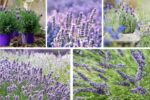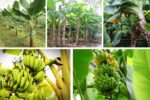Herbal tea—often called a “healing brew”—has become an essential part of the global wellness culture. Unlike traditional teas (black, green, oolong), herbal teas are not made from the Camellia sinensis plant. Instead, they are infusions of herbs, spices, flowers, and fruits. From chamomile and peppermint to hibiscus and rooibos, herbal teas offer a world of flavors and health benefits. As demand for natural, caffeine-free, and therapeutic beverages grows, so does the market for herbal teas.
But among all the countries contributing to this thriving sector, which country stands out as the largest herbal tea producer in the world? The answer is India, a land with a deep-rooted tradition of Ayurveda, herbal medicine, and natural wellness.
India’s Herbal Heritage: The Core of Herbal Tea Leadership

India is the undisputed leader in herbal tea production, thanks to its extensive biodiversity, traditional knowledge systems, and well-developed agricultural and processing infrastructure. According to data from the Spices Board of India and the Tea Board of India, the country produces thousands of tons of herbal teas annually, exporting them to more than 100 countries.
India’s dominance in the herbal tea market is grounded in its rich Ayurvedic tradition, which promotes holistic health using plant-based remedies. Many Indian households have long used herbs like tulsi (holy basil), ginger, turmeric, ashwagandha, lemongrass, and cardamom in daily brews for preventive and curative purposes.
Key Herbal Ingredients Grown in India
- Tulsi (Holy Basil) – Known for its adaptogenic and immunity-boosting properties, tulsi is grown extensively across northern and central India.
- Ginger – A staple in Indian kitchens and tea blends, ginger adds both flavor and digestive benefits.
- Turmeric – Revered for its anti-inflammatory and antioxidant powers.
- Ashwagandha – A rejuvenating herb used in stress-relieving blends.
- Lemongrass – Popular for its refreshing aroma and detoxifying effects.
- Mint, Fennel, and Licorice – Used in blends for digestive and respiratory health.
Global Herbal Tea Market Overview

The herbal tea market was valued at over USD 3.5 billion in 2022 and is projected to reach USD 5.6 billion by 2030, growing at a CAGR of over 6.2%, according to market research reports. This growth is fueled by rising consumer awareness of natural health products, clean-label demands, and an aversion to synthetic caffeine.
While other countries such as China, Egypt, and Germany are also prominent producers and exporters of herbal teas, none match India in scale, diversity of herbs, or traditional knowledge integration.
Other Leading Herbal Tea Producing Countries

1. China
China is a major player in the herbal tea market, especially known for chrysanthemum, ginseng, goji berry, and oolong-herbal hybrids. Traditional Chinese Medicine (TCM) contributes heavily to China’s herbal tea innovations. However, much of China’s tea industry is still focused on green and black tea.
2. Egypt
Egypt is renowned for its hibiscus, peppermint, and chamomile production. These ingredients are widely exported to Europe and the Americas. The Nile Delta’s fertile soils make Egypt ideal for aromatic herbs. However, Egypt has a more limited variety of herbal teas compared to India.
3. Germany
Germany may not be a major cultivator of herbs, but it is a global leader in herbal tea processing and packaging. German companies like Teekanne and Bad Heilbrunner are known worldwide, sourcing herbs globally, including from India.
4. Sri Lanka
Sri Lanka has carved a niche for itself in Ayurvedic herbal tea, focusing on exports of blends featuring cinnamon, cloves, and cardamom. The country’s tropical climate supports a wide range of herbal crops.
India’s Herbal Tea Export Success

India’s herbal tea industry has shown remarkable growth in both domestic and international markets. According to the Tea Board of India:
- In 2023, India exported more than 30,000 metric tons of herbal teas.
- Top importers of Indian herbal teas include the United States, Germany, UAE, Canada, the UK, and Japan.
- The country’s total herbal product exports exceeded USD 500 million in 2022.
Indian companies like Organic India, Teabox, Vahdam Teas, and The Tea Shelf are leading exporters of high-quality, organic, and sustainable herbal tea blends. These companies offer both loose-leaf and bagged teas infused with popular Ayurvedic herbs.
Government Support & Certification
India’s rise as the largest herbal tea producer is also backed by robust government support:
- AYUSH Ministry Initiatives – Promoting Ayurvedic and herbal remedies globally.
- Spices Board of India and APEDA – Supporting herb cultivation and export.
- Geographical Indications (GI) – For herbs like Darjeeling Green Tea with herbal infusions.
- Organic Certification Programs – Boosting exports to Europe and North America.
Sustainability & Organic Growth

A major reason for India’s dominance is its increasing focus on organic farming and sustainable cultivation. Regions like Sikkim, Uttarakhand, Kerala, and parts of Karnataka are seeing a shift toward chemical-free, rain-fed herbal farms. This aligns well with the global consumer preference for clean-label and ethically sourced wellness products.
Challenges and Opportunities
Challenges:
- Climate sensitivity of certain herbs.
- Fragmented supply chains for small-scale farmers.
- Market saturation in low-end herbal products.
Opportunities:
- Premium organic exports.
- Functional herbal blends (e.g., detox, immunity, stress relief).
- Ready-to-drink (RTD) herbal beverages.
- Collaborations with nutraceutical and pharmaceutical sectors.
Conclusion: Why India Leads the World
India’s dominance in the herbal tea industry is the result of its:
- Deep-rooted Ayurvedic and herbal knowledge systems.
- Large-scale cultivation of diverse herbs.
- Export-friendly policies and infrastructure.
- Innovation by local and global brands.
- Strong consumer trust in Indian-origin herbal products.
With rising health consciousness and global demand for plant-based wellness, India is not only the current largest herbal tea producer in the world—but it is also poised to shape the future of herbal beverages worldwide.





